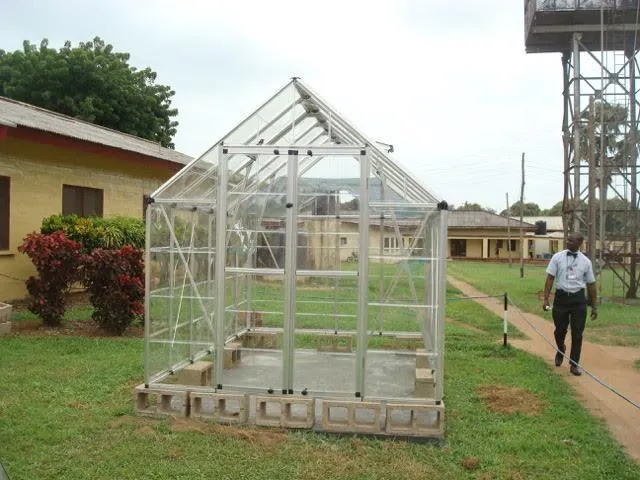These Plastic Canopies Could Save Thousands of Babies
Researchers have developed sunlight-filtering canopies as a low-tech treatment for jaundice in newborns
/https://tf-cmsv2-smithsonianmag-media.s3.amazonaws.com/filer/13/3d/133d7c80-1626-44cb-9936-cf11c72b0139/jaundice-2.jpg)
Jaundice, or the yellowing of the skin that happens when the liver can’t flush out the bile pigment bilirubin quickly enough, is incredibly common in newborns. More than half of all babies develop it in their first few weeks of life, and about 5 percent require treatment. In the United States and other developed countries, this treatment is as simple as putting the babies in an incubator under special UV lights. (They even get a pair of tiny sunglasses). The light breaks down the bilirubin, and the problem is completely solved in a few days.
But in poor countries, phototherapy is often hard to come by. The UV lights may be too expensive, or they break, and no one has the money or skills to fix them. There may not even be reliable electricity. Lacking this simple treatment, more than 160,000 babies die or suffer permanent brain damage from jaundice every year.
Now, researchers at Stanford, the University of Minnesota and the Massey Street Children's Hospital in Lagos, Nigeria have come up with a low-tech solution to the problem. Working in Nigeria, they built and tested special canopies that filter sunlight, creating an electricity-free form of phototherapy.
“This is an easy solution to a serious problem,” says David Stevenson, a Stanford professor of pediatrics, with a speciality in neonatal and developmental medicine.
The canopies were produced from cheap, widely available plastic films, which filter the wavelengths that cause sunburn and overheating, allowing only the jaundice-treating blue wavelengths to pass. Since babies’ delicate skin is very prone to sunburn and their bodies have not yet become adept at regulating body temperature, simply putting a baby in direct sunlight would be dangerous.
The trial involved 447 jaundiced infants at the hospital in Lagos, Nigeria’s largest city. Babies were randomly assigned to either standard phototherapy or treatment under the canopy. They received at least five hours a day of light exposure. Those getting the filtered sunlight treatment were held by their mothers, and could breastfeed during the treatment.
The results, as reported this month in the New England Journal of Medicine, showed the canopy treatment was 93 percent effective, compared to 90 percent for standard treatment.
“When you use the sun as your source, that’s reliable,” says Stevenson. “The sun comes out every day. Even when it’s cloudy, the sun is still there.”

Jaundice in infants has been a particularly difficult issue in global health for years, as many of the poorest parts of the world have the highest incidences of jaundice. Populations in some parts of Sub-Saharan Africa, Asia and the Mediterranean have a higher risk of glucose-6-phosphate dehydrogenase deficiency (G6PD deficiency), a genetic condition that provides some protection against malaria but increases the chances of jaundice.
When severe jaundice is left untreated, it can progress to bilirubin-induced brain damage known as kernicterus. This can cause seizures, brain swelling and death. Most infants who survive are left with permanent brain damage, including a severe form of cerebral palsy. While caring for children with this level of disability is difficult anywhere, it can be nearly impossible in resource-poor countries.
If phototherapy lamps aren’t available, the only solution is blood exchange transfusion, where some of the babies' bilirubin-poisoned blood is replaced with donor blood. This is a less than ideal option in rural areas in places like Sub-Saharan Africa, where AIDS and other blood-transmitted diseases are endemic.
Stevenson and his colleague Tina Slusher, the lead author of the study, hope their findings will inspire health officials in impoverished countries to build their own canopies. After more testing of the canopy's efficacy for babies with severe jaundice, the team plans to launch a public health campaign to spread the word. They envision the canopy concept being adapted for use in different climates. In places where it’s colder, the canopy could be enclosed, like a plastic greenhouse.
“As people read an article like this, they realize they don’t need Stanford University or me, they just need access to the [plastic] films,” Stevenson says. “They can build their own.”
/https://tf-cmsv2-smithsonianmag-media.s3.amazonaws.com/accounts/headshot/matchar.png)
/https://tf-cmsv2-smithsonianmag-media.s3.amazonaws.com/accounts/headshot/matchar.png)